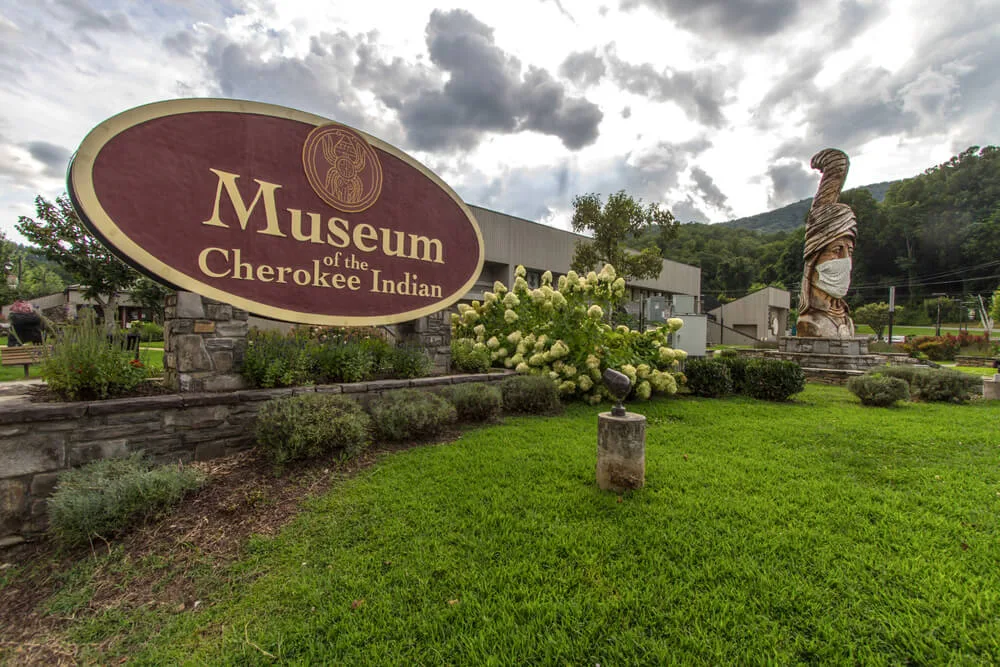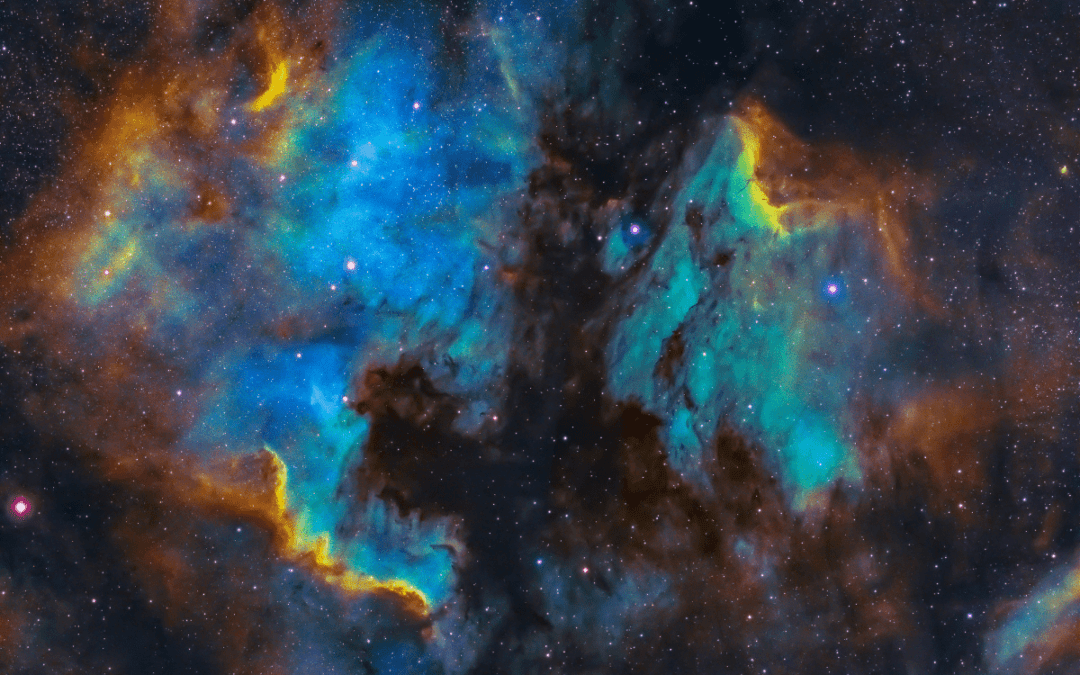
The Museum of the Cherokee Indian in Western North Carolina (Image via Shutterstock.)
These spots celebrate the heritage and impact of Native Americans.
Since the Ice Age, Indigenous people have inhabited the land now known as North Carolina. The state is still home to the largest population of Indigenous people east of the Mississippi, with eight recognized nations and cultures rich with art, music, environmental knowledge, and food. Throughout the state, museums and historical sites offer perspectives on the histories of Native people and how they shape modern life in North Carolina today.
Museum of the Cherokee Indian, Cherokee
For more than 13,000 years, the Cherokee people have lived in the Southern Appalachians. They endured the encroachment of white settlers, then the US government’s forcible removal of thousands of Cherokees from their land and relocation to Oklahoma during the Trail of Tears. Some groups of Cherokee resisted that removal. Their descendents remain based in the North Carolina mountains and are known as the Eastern Band of Cherokee Indians.Learn more about this history at the Museum of the Cherokee Indian, which utilizes interactive exhibits, artifacts and live events such as performances of traditional dance.
Town Creek Indian Mound State Historical Site, Mt. Gilead
Around the 11th century, a new culture began to emerge in the Pee Dee River Valley.Part of a widespread tradition now known as South Appalachian Mississippian, these Native Americans built earthen mounds for their spiritual and political leaders to live and later be buried near. One such mound remains at the Town Creek Indian Mound State Historical Site, which was first excavated in 1937 and the only state historical site dedicated to Native American history. The Mound remains an active archaeological site today, with reconstructions of temples, a burial house and stockade to give visitors a better idea of what life during that era was like.
Pettigrew State Park, Creswell
Situated around Lake Phelps—North Carolina’s second-largest natural lake—Pettigrew State Park in Tyrrell and Washington counties boasts an array of indigenous artifacts that establish humanity in the region as early as 8,000 BCE.
Among the thousands of relics uncovered by archaeologists are projectile points, intact pots and a collection of 30 dugout canoes. Visitors can see some of the canoes—the oldest of which is around 4,400 years old—on display at the park’s visitor center in the northeastern part of the state.
Museum of the Southeast American Indian, Pembroke
Located on the campus of UNC-Pembroke, the Museum of the Southeast American Indian celebrates the culture and legacy of Indigenous people, particularly those in Robeson County. Permanent exhibits include a 1,100-year-old dugout canoe, an 18th-century log cabin recreation and a tribute to the Lumbee resistance to the Ku Klux Klan during the Battle of Hayes Pond in 1958. The museum also hosts traveling exhibitions and events throughout the year.
Frisco Native American Museum, Frisco
The Frisco Native American Museum celebrates the traditions of some of the earliest inhabitants of the Outer Banks. In addition to static exhibits, visitors can explore Native cultures through workshops and hands-on programming, such as basket making, cooking classes, and more. The museum boasts a nature trail that winds through the adjacent forest and includes a dance circle where annual performances take place.
Politics

Women share horror stories caused by red state abortion bans
In a visit to Charlotte, two women from Republican-led states opened up about traumatic experiences caused by the kind of extreme abortion bans that...

An election-season glossary of far-right code words
Republicans Dan Bishop, Mark Robinson, and Michele Morrow form one of the most far-right ballots in the country, but as they court a far more...
Local News

VIDEO: Two men rescued off Beaufort, NC
https://www.tiktok.com/@cardinalandpine/video/7353300192906562859?lang=en WATCH: We love our Coasties in NC! ⚓️ When a boat ran aground off of...

Meet 7 women who broke barriers in the field of astronomy and beyond
Many corners of the scientific world have been profoundly impacted by the work of women. They’ve blazed a trail across every field, breaking down...




